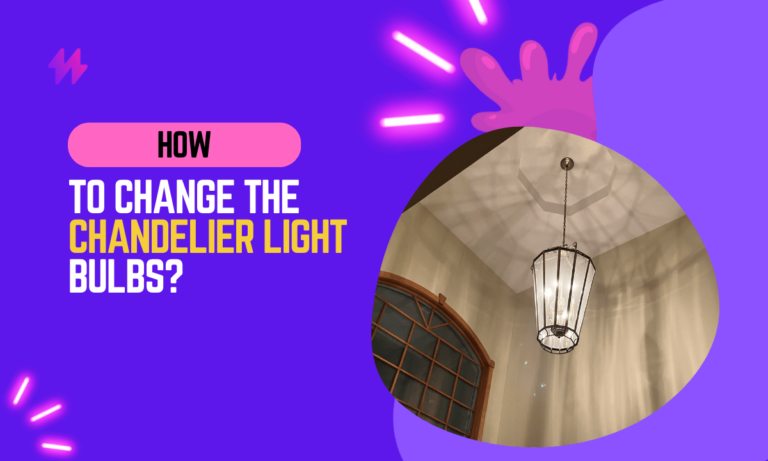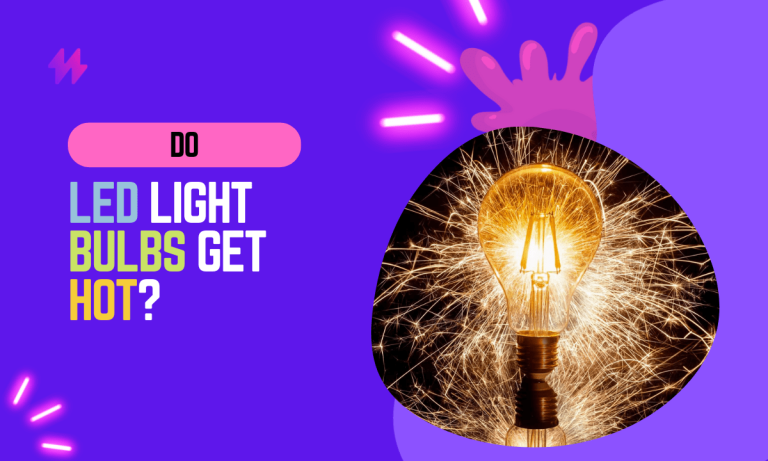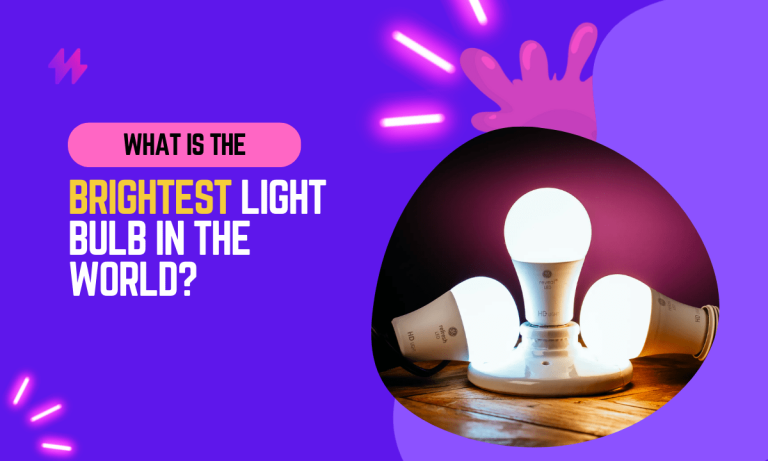How to Choose the Right E12 Light Bulb?
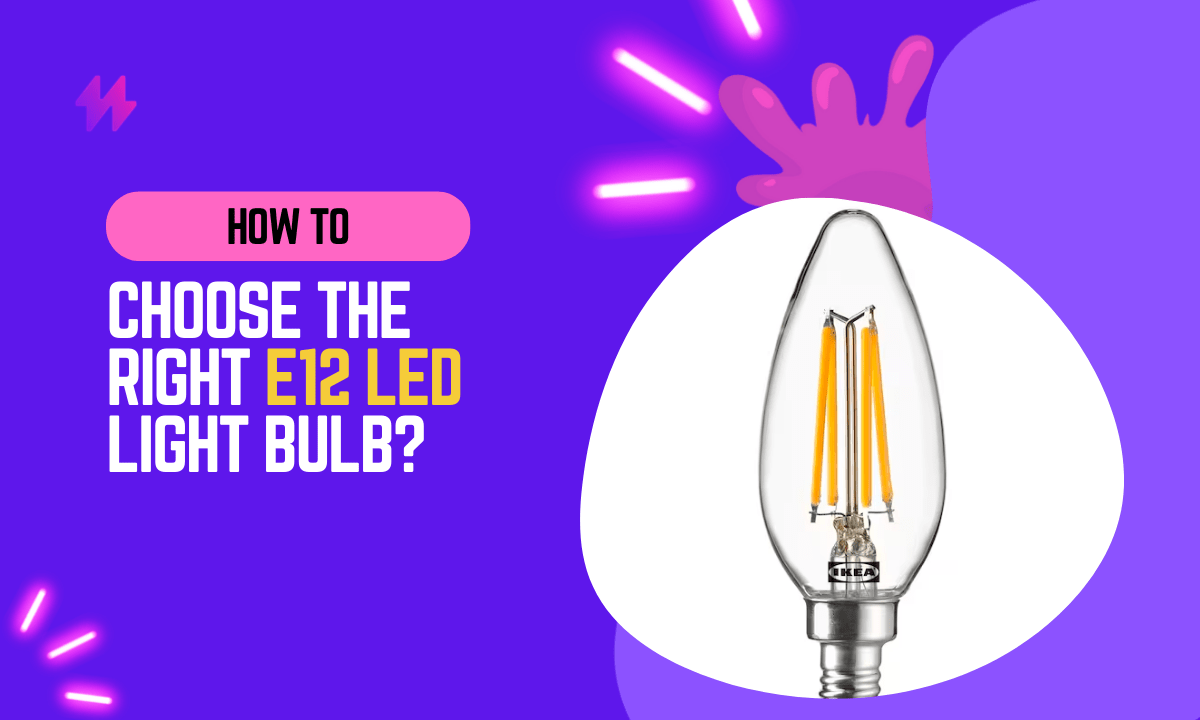
Choosing the right E12 light bulb may seem like a simple task, but it can significantly impact the ambiance, energy efficiency, and overall functionality of your lighting fixtures. With a wide range of options available in the market, it’s important to understand the key factors that contribute to making an informed decision.
Whether you’re looking to illuminate your chandelier, table lamp, or outdoor fixture, this blog will guide you through the process of choosing the perfect E12 light bulb for your needs.
From understanding the different types of E12 bulbs to determining the appropriate wattage, color temperature, and energy efficiency, we’ll cover it all.
We will also explore specific applications, such as ceiling fixtures, table lamps, decorative lighting, and outdoor fixtures, providing tailored recommendations for each scenario.
Choosing the right E12 light bulb is essential for enhancing the charm and effectiveness of your light fixtures. Different E12 bulbs can elevate the style of your home lighting, making it critical to consider lighting choice and quality when selecting between incandescent light bulbs, LED light bulbs, and decorative light bulb styles.
How to Choose the Right E12 Light Bulb: Understanding E12 Bulb Variants and Light Bulb Types
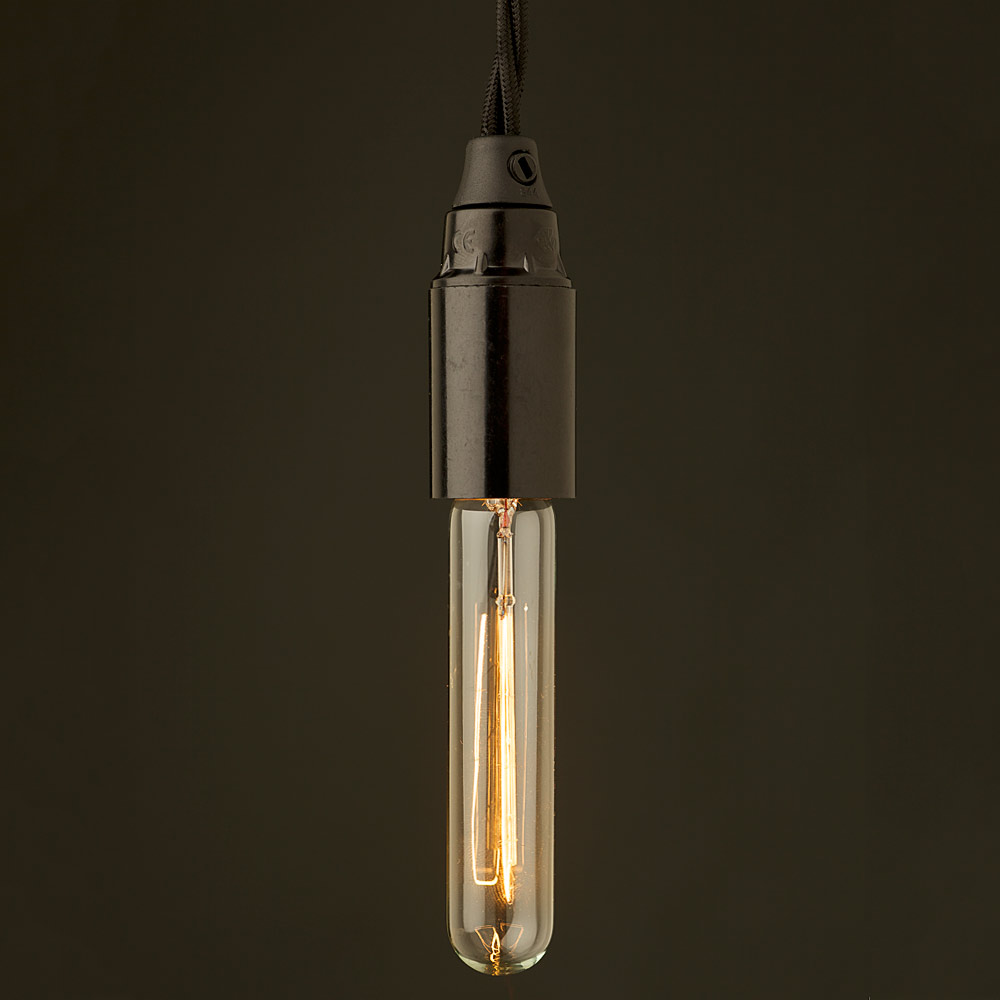
E12 light bulbs, also known as candelabra bulbs, are named after the size and type of their base. The “E” refers to the Edison screw base, which is a threaded metal base used to connect the bulb to the socket. The number “12” indicates the diameter of the base in millimeters.
E12 bulbs typically have a threaded base that measures approximately 12 millimeters in diameter. This smaller size allows them to fit into fixtures that require a more compact bulb, including chandeliers, wall sconces, ceiling fans, and various decorative lighting fixtures.
E12 light bulbs, often referred to as candelabra bulbs, are the ideal choice for many lighting fixtures due to their compact size and versatile application. When deciding how to choose the right E12 light bulb, it’s important to focus on the quality and style of the bulbs to ensure they meet your lighting needs effectively.
Exploring Various Types of E12 Bulbs: Common Light Bulb Bases and Beyond
Exploring E12 Light Bulbs: Insights on Incandescent Options and E14 Bulb Variants
Traditional incandescent E12 bulbs produce light by heating a filament inside the bulb until it glows. However, due to their low efficiency and shorter lifespan, incandescent bulbs are gradually being phased out in favor of more energy-efficient alternatives.
When considering E12 light bulbs, it’s essential to pay attention to factors such as efficiency and aesthetic appeal to choose the ideal bulb for your fixtures. Whether it’s the warm glow of incandescent lights or the energy savings of LED lighting, understanding the options will help enhance your home lighting needs effectively. To ensure you select the best fit, explore various E12 bulb variants available in the market.
E12 LED Bulbs: A Comprehensive Overview
LED E12 bulbs are becoming increasingly popular due to their energy efficiency, longevity, and versatility. They use a semiconductor to emit light and consume significantly less energy compared to incandescent bulbs. LED E12 bulbs are available in various brightness levels, color temperatures, and even dimmable options.
LED E12 bulbs not only offer an energy-efficient option for homeowners, but they also come in various styles and designs that can suit any light fixture. By opting for popular E12 bulbs like warm E12 bulbs or decorative light bulbs, you can achieve both aesthetic appeal and functionality in your lighting setup.
Exploring Halogen E12 Bulbs: Understanding Their Features and Benefits
E12 halogen bulbs are a type of incandescent bulb that contains halogen gas, which helps to increase their efficiency and lifespan. Halogen bulbs provide bright, white light and are often used in decorative lighting fixtures.
Choosing the right E12 light bulb not only enhances the beauty of your light fixtures but also directly impacts your energy consumption and lighting quality. For those seeking the perfect ambiance, exploring different light bulb types such as E12 candelabra bulbs or traditional incandescent bulbs can lead to improved decorative lighting needs in your home.
Unique E12 Bulb Options: Exploring Other Specialty Bulbs
In addition to incandescent, LED, and halogen, there are other specialty E12 bulbs available for specific purposes. For example, decorative E12 bulbs may feature unique filament designs or shapes, providing an aesthetic appeal while still maintaining functionality.
Also read: A19 vs A21 Light Bulbs – What’s the Difference
In addition to incandescent, LED, and halogen, there are other specialty E12 bulbs available for specific purposes. For example, decorative E12 bulbs may feature unique filament designs or shapes, providing an aesthetic appeal while still maintaining functionality. The selection of an E12 bulb can dramatically influence both the energy efficiency and overall ambiance of your space. When upgrading your light fittings, it’s wise to consider modern options like LED lights that offer both style and substantial energy savings.
Key Considerations for Selecting the Right E12 Light Bulb
E12 Light Bulb Types: A Comprehensive Guide
The first factor to consider when choosing an E12 light bulb is the bulb type. There are three common types to choose from incandescent, halogen, and LED.
When determining the best E12 light bulb for your specific needs, consider factors such as the bulb type, wattages, and aesthetic characteristics. The right E12 bulbs not only enhance the visual appeal of your home’s lighting but also provide options like energy-efficient LED bulbs or decorative candle-style E12 bulbs that align with your decorative lighting purpose.
- Incandescent bulbs: These are the traditional bulbs that produce light by heating a filament. They are affordable but less energy-efficient and have a shorter lifespan compared to other options.
- Halogen bulbs: Similar to incandescent bulbs, halogen bulbs also have a filament but contain a halogen gas that helps extend the filament’s lifespan. They provide a bright, crisp light and are often used in task lighting.
- LED bulbs: LED bulbs use light-emitting diodes to produce light. They are highly energy-efficient, have a long lifespan, and are available in various color temperatures. LED bulbs are the preferred choice for their energy savings and versatility.
Wattage Considerations: Key Factors to Evaluate When Selecting E12 Light Bulbs
Another crucial factor to consider is the wattage and brightness level of the E12 bulb. Wattage determines the amount of power consumed by the bulb, while brightness is measured in lumens and indicates the amount of light emitted.
When selecting an E12 light bulb, it’s important to also consider how wattage impacts your energy efficiency and overall lighting experience. Whether you choose a standard bulb or opt for innovative lighting solutions like low-voltage E12 bulbs, understanding the e12 bulb quality ensures you make an informed decision for your lighting fixtures.
**Understanding Brightness in E12 Light Bulbs: Key Factors to Consider**
It’s important to determine the required brightness level for your specific lighting needs. Consider the size of the room or space, the desired ambiance, and the purpose of the lighting. Additionally, ensure that the wattage and lumens of the E12 bulb are suitable for the fixture and do not exceed the maximum wattage recommended by the manufacturer.
When choosing an E12 light bulb, it’s also beneficial to consider the specific light bulb size that fits your fixtures and how it can influence the overall look and feel of the space. Opting for decorative bulbs such as candelabra light bulbs or colorful E12 lights can significantly enhance your decorative lightings and create a welcoming ambiance in any room.
Understanding Color Temperature in E12 Light Bulbs
The color temperature of a light bulb refers to the appearance of light in terms of warm or cool tones. It is measured in Kelvin (K) and can range from warm yellowish tones (lower Kelvin values) to cool bluish-white tones (higher Kelvin values). The choice of color temperature depends on the desired atmosphere and the purpose of the lighting. For a cozy and intimate ambiance, warmer color temperatures (around 2700K to 3000K) are suitable, while cooler color temperatures (around 4000K to 5000K) are often preferred for task lighting or spaces where a more vibrant and energetic feel is desired.
Understanding the color temperature of light bulbs is crucial when selecting the appropriate lighting for your environment. For instance, while an A19 bulb emits a warm light that fosters a cozy atmosphere, a medium Edison screw bulb can provide a brighter, more vibrant light ideal for tasks requiring focus and clarity. Selecting different light bulbs according to their color temperature can significantly influence the mood and functionality of your living spaces.
Energy Efficiency in E12 Light Bulbs: Important Factors to Consider
Energy efficiency is a crucial consideration, both for cost savings and environmental impact. LED bulbs are highly energy-efficient, consuming significantly less energy compared to incandescent or halogen bulbs. Look for E12 LED bulbs with an ENERGY STAR certification or high-efficiency ratings to ensure optimal energy savings.
When selecting an E12 light bulb, it is important to assess how the bulb base can align with your existing lighting fixtures to achieve optimal compatibility. Various bulb types, including LED and traditional incandescent options, will influence not only the efficiency of your home lighting but also the overall aesthetic appeal, enhancing spaces such as recessed lights and desk lamps.
Evaluating Bulb Lifespan: Key Insights on E12 Light Bulbs
The lifespan of the E12 bulb is an important factor, as it determines how often you’ll need to replace it. LED bulbs have the longest lifespan, ranging from 15,000 to 50,000 hours or more, while incandescent and halogen bulbs have much shorter lifespans. Consider the longevity of the bulb and factor it into your decision-making process.
The innovative design of new E12 bulbs can significantly enhance your home’s lighting setup. Whether you prefer the brightness of fluorescent lights or the cozy glow of traditional incandescent bulbs, the right choice of E12 bulb base will ultimately create a harmonious atmosphere throughout your living space.
Understanding Dimmability in E12 Light Bulbs
If you plan to use the E12 bulb in a fixture that requires dimming capability, make sure to check if the bulb is dimmable. Not all E12 bulbs are designed to be dimmable, so if dimming functionality is essential to you, look for bulbs explicitly labeled as dimmable and ensure compatibility with your dimmer switch.
Also read: 5 Solid Reasons to Switch to Ecosmart Light Bulbs
It’s crucial to note that the compatibility of your chosen E12 bulb with existing fixtures and dimmers can greatly influence your lighting experience. Additionally, many E12 bulbs today offer various styles and brightness levels, making it easier to find aesthetic and functional replacements for standard light bulbs in your home.
Applications of E12 LED Light Bulbs: Insight into Specific Uses
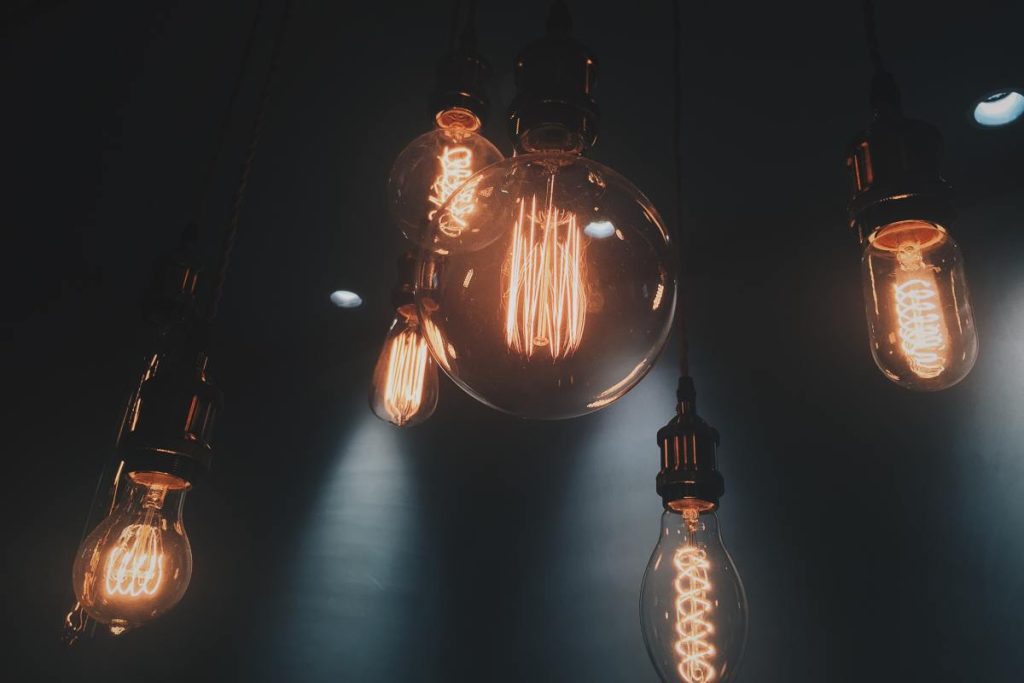
Ceiling Fixtures: A Comprehensive Guide to E12 Light Bulbs
Chandeliers and pendant lights often feature multiple E12 sockets, requiring several bulbs to create a beautiful lighting display. Opt for E12 bulbs that complement the style and design of your fixture. Consider the wattage and brightness to achieve the desired illumination level without overwhelming the space. LED bulbs are a popular choice for their energy efficiency and longevity.
When selecting E12 bulbs for chandeliers and pendant lights, remember that the right light bulb can significantly transform the ambiance of any room. The versatility of E12 bulbs, such as candle-shaped bulbs and their compatibility with various light bulb bases, allows for creative solutions that enhance both decorative and functional lighting needs.
Exploring Table Lamps: The Essential Guide to E12 Light Bulbs
Bulb Size and Fit: When selecting E12 bulbs for table lamps, consider the size of the lampshade and the space available. Ensure that the bulb fits comfortably without protruding or causing any obstructions. Smaller-sized LED bulbs or compact fluorescent bulbs (CFLs) are usually a good fit for table lamps.
Choosing appropriate E12 bulbs for table lamps involves assessing the size of the lampshade to ensure a perfect fit. It’s also wise to consider how different bulb sizes, including the popular light-emitting diode (LED) options and compact fluorescent light bulbs (CFL), can enhance your lamp’s functionality and aesthetic appeal. Additionally, selecting the right E12 bulb outdoors can elevate the ambiance of your exterior spaces. The versatility of E12 bulbs allows for creative arrangements, making them ideal for both decorative excitement and practical illumination.
Updated Heading: E12 Light Bulbs: Essential Insights for Decorative Lighting
E12 bulbs are commonly used in decorative lighting fixtures to add charm and style to a space. Consider filament bulbs or vintage-style bulbs to create a nostalgic and vintage look. These bulbs feature exposed filaments that emit a warm and soft glow. LED filament bulbs are available and offer the same aesthetic appeal with the added benefits of energy efficiency and longer lifespan.
Choosing the right E12 bulb, such as vintage-style or filament bulbs, can significantly influence the warmth and ambiance of your space. Incorporating various E12 bulbs alongside decorative lanterns and other lighting options can create a beautifully cohesive look throughout your home.
Outdoor Lighting Insights: Exploring E12 Light Bulbs
When it comes to outdoor lighting fixtures, it’s important to select E12 bulbs that are designed for outdoor use and can withstand varying weather conditions. Look for bulbs with weather-resistant ratings or specifically labeled for outdoor use. LED bulbs are ideal for outdoor applications due to their durability, energy efficiency, and resistance to temperature fluctuations.
You may also like: What are E26 Bulbs and How to Choose them?
When it comes to outdoor lighting, choosing the right light bulb is key for ensuring both style and functionality in your garden or patio. E12 bulbs use specific casing styles, like cone-shaped bulbs or decorative bulb styles, to enhance aesthetic appeal while providing adequate illumination in outdoor spaces. Additionally, you may want to consider using multiple E12 bulbs in different lamp fixtures to create a visually dynamic outdoor setting.
Essential Tips for Purchasing E12 Light Bulbs
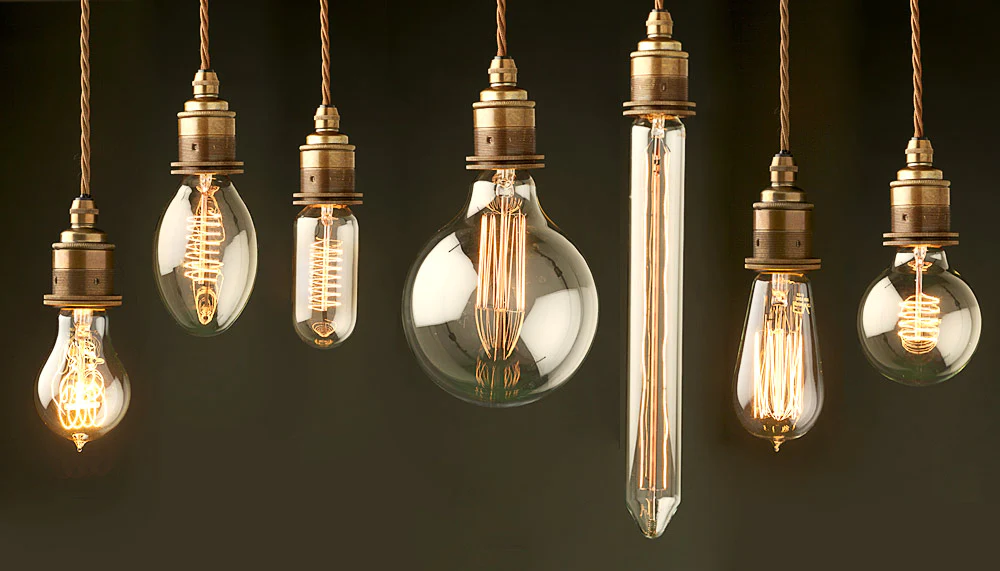
When it comes to purchasing E12 light bulbs, several tips and considerations can help you make an informed decision. By following these guidelines, you can ensure that you select the right bulbs for your specific needs and maximize your satisfaction with the purchase.
When purchasing E12 light bulbs, it’s important to understand the various styles available, such as LED, traditional incandescent, and decorative options like twinkle bulbs. This consideration ensures that you select the best E12 bulbs to enhance the aesthetic appeal of your fixtures while also meeting your functional lighting needs. For ambient lighting, swapping E12 lamp bases with decorative light e12 options can transform a room’s atmosphere. Exploring options like CFL E12 bulbs and halogen E12 bulbs can also offer energy-efficient alternatives that respect both style and environmental sustainability.
Research & Compare Your E12 Light Bulb Options for Optimal Choices
Take the time to research different brands, models, and types of E12 bulbs available in the market. Read product descriptions, specifications, and customer reviews to gather information about the performance, quality, and reliability of the bulbs.
Compare the features, energy efficiency ratings, and price points of various E12 bulbs. Look for bulbs that offer the desired combination of brightness, color temperature, and energy savings.
When selecting E12 bulbs, ensure to examine their compatibility with your lighting fixtures for optimal functionality. Many homeowners prefer energy-saving options like CFL E12 bulbs or innovative LED light e12 designs to improve both efficiency and style within their spaces.
Customer Reviews and Ratings: A Vital Guide for E12 Light Bulb Selection
Customer reviews can provide valuable insights into the performance and reliability of E12 bulbs. Read reviews from verified buyers to gauge their experiences and determine if the bulbs meet their expectations.
Pay attention to reviews that mention specific factors relevant to your needs, such as brightness, color accuracy, dimming capabilities, or longevity. This information can help you make an informed decision and avoid potential issues.
To maximize the benefits of E12 bulbs, it’s advisable to research the appropriate wattage and bulb base sizes for your specific fixtures. Additionally, considering the integration of decorative elements like twinkle bulbs can greatly enhance the aesthetic and ambiance of your living spaces.
Purchasing Considerations for E12 Light Bulbs: In-Store vs. Online
If possible, visit a physical store to see the E12 bulbs in person. This allows you to examine the build quality, color temperature, and overall appearance of the bulbs before making a purchase.
When buying online, rely on reputable sellers or official manufacturer websites to ensure authenticity and quality. Carefully read the product descriptions, specifications, and customer reviews to make an informed choice.
Exploring E12 bulbs in a physical store can provide a clear understanding of the differences in build quality and aesthetic when choosing the right light bulb for your needs. Ensure you check the compatibility of these bulbs with your existing fixtures, as e12 lamp bases and e14 bulbs may vary significantly in size and design, influencing your overall lighting experience.
Understanding Warranty and Return Policies for E12 Light Bulbs
Check the warranty offered by the manufacturer or retailer for the E12 bulbs you are considering. A warranty provides peace of mind and protection against defects or premature failures.
Familiarize yourself with the return policy in case you need to exchange or return the bulbs. Ensure that the policy aligns with your expectations and allows sufficient time for testing the bulbs and making a decision.
When choosing E12 bulbs, it’s beneficial to explore the wide variety of lighting options available, including modern lighting solutions like LED light colors and traditional incandescent lights. Additionally, considering factors such as the bulb base and the compatibility of e12 fixtures with different lamp holders can significantly improve your lighting experience, ensuring that every corner of your home is well-lit with the right ambiance.
Evaluate Compatibility with Current Fixtures and Dimmer Switches
Ensure that the E12 bulbs you choose are compatible with your existing fixtures. Check the socket size and voltage requirements to ensure a proper fit and electrical compatibility.
Must read: Which is the best brightest light bulb?
When choosing E12 light bulbs for your needs, ensure compatibility with existing E12 lamp fixtures and check the dimensions to guarantee a snug fit. Additionally, exploring various e12 bulb brands will provide you with options that not only enhance your decorative lighting but also optimize energy efficiency and bulb performance.
Concluding Thoughts on E12 Light Bulbs: Key Takeaways
In conclusion, selecting the right E12 light bulb, commonly known as a candelabra bulb, involves more than just fitting a bulb into a smaller socket. It requires an understanding of both the functional requirements and the aesthetic considerations specific to the space where the bulb will be used. E12 bulbs come in a variety of shapes, sizes, and types, including LED, incandescent, and halogen options, each offering different levels of brightness, color temperature, and energy efficiency. For instance, LED E12 bulbs are highly recommended for their longevity and low energy consumption, making them an environmentally friendly and cost-effective choice. They are particularly suitable for fixtures that are used frequently or for extended periods, such as in dining room chandeliers or kitchen pendant lights.
Furthermore, the ambiance of a room can be greatly influenced by the color temperature of the bulb. Warm white bulbs (around 2700K to 3000K) create a cozy and inviting atmosphere, ideal for living rooms and bedrooms, while cooler whites (above 4000K) provide a crisper light that enhances concentration and alertness, making them suitable for study areas or offices. It’s also important to consider the dimmability of E12 bulbs, especially in settings where adjustable lighting is desired to set different moods or focus levels throughout the day. Ensuring compatibility between the bulb and the dimmer switch is crucial to avoid flickering and to extend the life of the bulb. By carefully considering these aspects—type of bulb, color temperature, and dimmability—you can effectively choose the right E12 bulb that not only fits the technical requirements of your lighting fixtures but also enhances the overall ambiance of your home or office.



